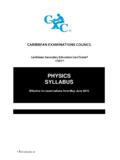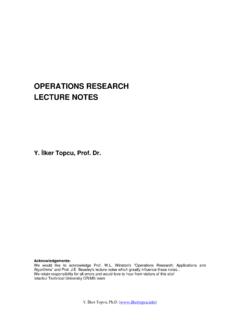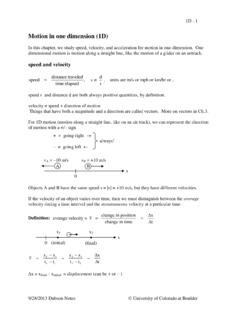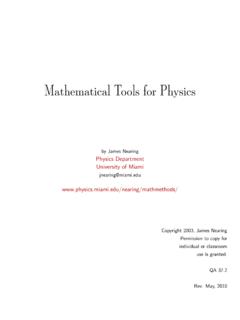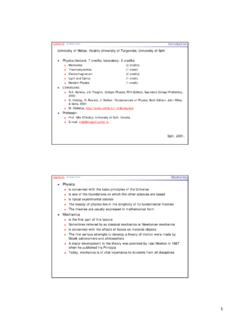Transcription of Applications of Group Theory to the Physics of Solids
1 IApplicationsof GroupTheoryto the Physicsof SolidsM. S. :Spring2002 Applicationof GroupTheoryto thePhysicsof Dresselhaus BasicMathematicalBackground{ Introduction RepresentationTheoryand BasicTheorems Characterof a Representation BasisFunctions GroupTheoryand QuantumMechanics Applicationof GroupTheoryto CrystalFieldSplittings Applicationof GroupTheoryto SelectionRulesand DirectProducts PermutationGroupsand Many-ElectronStates ElectronicStatesof Moleculesand DirectedValence MolecularVibrations,Infraredand RamanActivity Icosahedralgroups TransformationPropertiesof Tensors SpaceGroups Groupof the Wave Vectorand Bloch's Theorem Applicationsto LatticeVibrations Use of StandardReferenceTexts Calculationof the ElectronicEnergyLevels in a CubicCrystal EnergyBandModelsBasedon Symmetry Applicationto LandauTheoryof PhaseTransitions SpinOrbitInteractionin Solidsand DoubleGroups Applicationof DoubleGroupsto EnergyBandswithSpin TimeReversalSymmetry MagneticGroups1 Contents1 nitionof a Group .}
2 A Group .. nitions.. Theorem.. Class.. 112 De nitions.. of Representations.. 's Lemma(Part I) .. 's Lemma(Part 2) .. Theorem.. VectorSpaces.. 313 Characterof a nitionof Character.. Class.. Theoremfor Character.. of IrreducibleRepresentations.. Relationfor Characters.. CharacterTables.. 734 BasisFunctions.. IrreducibleRepresentations.. ^P( n)kl.. ^P( n)k`.. an ArbitraryFunction.. 3 Equivalent Atoms.. 925 GroupTheoryand .. Schr odinger'sEquation.. GroupTheory.
3 1006 Applicationto .. on the Formof CrystalFields.. the Full RotationGroup.. a CubicCrystalFieldEnvironment .. on BasisFunctions.. OtherSymmetryOperators.. 1267 Applicationto Important Resultsfor BasisFunctions.. Two Groups.. Two IrreducibleRepresentations.. the DirectProductof Groupsand Repre-sentations.. ElectricDipole Transitions.. 1448 ElectronicStatesof .. Equivalence.. General.. Multi-atomicMolecules.. - and -bonds.. 1919 { Background.. GroupTheoryto MolecularVibrations.. H2O .. CombinationModes.}
4 LinearMolecules.. Molecule.. OtherMolecules.. the NH3 Molecule.. the CH4 Molecule.. the B12H12 Molecule.. ect.. ectfor H2.. ectfor H2O .. ectfor NH3.. ectfor CH4.. ectfor CO2and C2H2.. ectfor PlanarXH3.. ectfor B12H12.. {Eckart Theoremand SelectionRules.. 23210 .. PermutationGroups.. of IrreducibleRepresentations.. PermutationGroups.. Principlein AtomicSpectra.. 26211 Transformationof .. Components of Tensors.. Components of Tensors.. Non-LinearOptics.. {Oh.. {Td.. RotationalSymmetry:3D Isotropy.}}}
5 AxialSymmetry.. 29512 .. Point Groups.. of Five-Fold Symmetry.. DimensionalSpaceGroups.. Two-dimensionalBravais Lattices.. the SpaceGroups.. ObliqueSpaceGroups.. RectangularSpaceGroups.. SquareSpaceGroup.. HexagonalSpaceGroups.. Non-Symmorphic3D SpaceGroups.. 34313 Groupof the Wave Vectorand Bloch's .. 's Theorem.. the Wave Vector.. Lattice.. and Axes.. Bloch Functions.. Relations.. 372viiiCONTENTS14 Applicationsto .. Relative to MolecularVibrations.. PhononModes.. the NaClStructure.. the PerovskiteStructure.
6 The DiamondLattice.. the ZincblendeStructure.. Away From~k= 0 .. NaClat theXpointk= a(100).. BaTi3at theXpoint .. Te and Quartz.. Tellurium.. -Quartz.. ectof UniaxialStresson Phonons.. in HighTcRelatedMaterials.. the YBa2Cu3O6 Structure.. TheYBa2Cu3O7 Structure.. 42815 Use of .. the CrystalStructure.. the SpaceGroup.. Groupsof the Wave Vector.. Graphite.. OrdinaryHexagonalGraphite.. PuckeredGraphite.. 44816 EnergyLevels in .. Solutionsat~k= 0 .. at .. Solutionsat theXPoint .. ectof GlidePlanesand ScrewAxes.
7 47817 EnergyBandModelsBasedon .. ~k ~pPerturbationTheory.. ~k ~pperturbationtheoryin sc lattice.. BandModel in PerturbationTheory.. ~k ~pPerturbationTheory.. ~k ~pPerturbationTheory.. EnergyBands.. 0: .. 1: .. 2: .. 3: .. 51718 Applicationto .. Statesfor MultivalleySemiconductors.. 53119 SpinOrbitInteractionin .. of the Kosteret al. Reference.. Functionsfor DoubleGroups.. of ReferenceBooks .. 575xCONTENTS20 Applicationto .. ~k ~pPerturbationwithSpin-Orbit.. DoubleGroupRepresentations.. 3=2 and 1=2 States.
8 Other +8 States.. (~k) IncludingSpin-OrbitInteraction.. (~k) for DegenerateBands.. ectiveg{Factor.. 60721 .. ectof^TonE(~k) .. Spin-OrbitInteraction.. 62622 .. of Elements .. of MagneticPoint Groups.. MagneticPoint Groups.. MagneticStructures.. FerromagneticUnitCell.. RutileStructure.. EuSe.. 64123 Fullerenesand Carbon .. VibrationalModes .. ElectronicStates.. Lower Symmetry.. C70.. HigherMassFullerenes.. IsotopicE ects.. Carbon Nanotubes .. Nanotubes and Fullerenes.. cationof LatticeVectorsin RealSpace.}
9 SymmorphicCarbon Nanotubes .. NonsymmorphicNanotubes .. LatticeVectors.. 69824 LandauTheoryof the SecondKind.. of speci cheat.. of continuoustransitions.. a two-dimensions.. SecondOrderPhaseTransitions.. 757 Chapter1 BasicMathematicalBackground{ IntroductionIn this chapterwe considermainlymathematicalde nitionsand con-ceptsthatare basicto grouptheoryand the classi cationof nitionof a GroupA collectionof elementsA;B;C;:::forma groupwhenthe followingfourconditionsare satis ed:1. Theproductof any two elements of the groupis itselfan elementof the example,relationsof the typeAB=Carevalid for all members of the Theassociative law is valid { , (AB)C=A(BC).}}
10 3. Thereexistsa unitelementE(alsocalledthe identity element)such thatthe productofEwithany groupelement leaves thatelement unchangedAE=EA= For every element thereexistsan inverse,A 1A=AA 1= is not necessarythatelements of the general,theelements will not commuteAB6=BA. Butif all elements of a groupcommute, the groupis :Thesymmetryoper-ationson an equilateraltriangle,are the rotationsby 2 =3 aboutthe origin0 and the rotationsby about the axes01, 02, and a GroupAs a simpleexampleof a Group ,considerthe permutationgroupforthreeelements,P(3).













